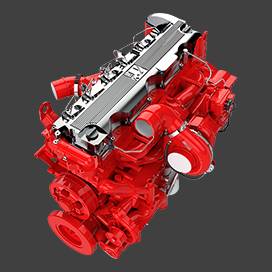Nov . 10, 2024 19:26 Back to list
Essential Guide to Replacing Brake Drums for Optimal Vehicle Performance and Safety
Brake Drum Replacement A Comprehensive Guide
Brake drums are critical components of a vehicle's braking system, primarily found in older models and some newer vehicles equipped with rear drum brakes. Due to their essential role in slowing down or stopping a vehicle, it is crucial for drivers to be informed about the necessity and process of brake drum replacement. This guide will explore the signs that indicate time for replacement, the importance of timely maintenance, and a step-by-step overview of the replacement procedure.
Understanding the Brake Drum Function
Brake drums work in conjunction with brake shoes to provide the necessary friction for stopping a vehicle. When you press the brake pedal, hydraulic pressure forces the brake shoes against the inside of the rotating drum. The friction generated slows down the wheel. Over time, both the brake shoes and the drum can wear out due to constant use.
Signs That You Need Brake Drum Replacement
1. Noise If you hear a grinding or squealing noise when you apply the brakes, it could indicate that your brake shoes have worn down, and the drum is scraping against metal. This noise is a clear warning sign that immediate attention is necessary.
2. Vibration A pulsating brake pedal or vibration while braking may suggest that your brake drums are warped. This condition can lead to uneven braking and can compromise safety.
3. Reduced Performance If your vehicle takes longer to stop or feels less responsive when braking, it may be due to worn brake drums. Reduced braking efficiency is a serious safety hazard.
4. Visual Inspection If you notice cracks, scoring, or significant wear on the brake drum surface during a visual inspection, it is time to replace it. Ideally, drums should be replaced if they fall below the manufacturer’s specified thickness.
5. Brake Light Warning Some vehicles have brake light indicators that can alert you to issues with the braking system. If this light appears on your dashboard, it’s advisable to have your brakes inspected, including the brake drums.
Importance of Timely Replacement
Neglecting to replace worn brake drums can lead to more severe issues, including decreased braking performance, increased stopping distances, and complete brake failure. Additionally, worn drums can cause damage to other components of the braking system, leading to costly repairs. Thus, regular inspection and timely replacement are crucial for vehicle safety.
brake drum replacement

Step-by-Step Brake Drum Replacement Procedure
Tools Needed - Jack and jack stands - Lug wrench - Brake drum puller (if necessary) - Socket set - Brake cleaner - New brake drums - Brake grease - Safety goggles and gloves
Procedure
1. Prepare the Vehicle Park the vehicle on a level surface, engage the parking brake, and wear safety gear.
2. Loosen Lug Nuts Use the lug wrench to slightly loosen the lug nuts on the wheel where you will be replacing the drum.
3. Lift the Vehicle Use the jack to raise the vehicle and secure it with jack stands. Remove the wheel by taking off the lug nuts completely.
4. Remove the Brake Drum If the drum does not come off easily, you may need to use a brake drum puller. Inspect the brake shoes for wear and the condition of the drum.
5. Install the New Brake Drum Before installing the new brake drum, clean the hub surface with brake cleaner to ensure a proper fit. Place the new drum onto the hub.
6. Reassemble Reattach the wheel and hand-tighten the lug nuts. Lower the vehicle from the jack stands and tighten the lug nuts fully in a crisscross pattern.
7. Brake Test Before driving, pump the brakes a few times to seat the new drum and shoes properly. Check for any unusual noises or vibrations during a test drive.
Conclusion
Replacing your brake drums is a vital aspect of maintaining your vehicle’s safety and performance. By being aware of the signs of wear and understanding the replacement process, you can ensure your vehicle remains in optimal driving condition. Regular maintenance not only extends the lifespan of your braking system but also enhances overall driving safety. If you're unsure about performing the replacement yourself, always consult with a qualified mechanic. Remember, your safety on the road is paramount.
-
Scania Brake Drums: OEM Quality for Optimal Safety & Durability
NewsAug.16,2025
-
R.V.I: Advanced Remote Visual Inspection for Precision
NewsAug.15,2025
-
Discover HYUNDA: Innovative Vehicles, Equipment & Solutions
NewsAug.14,2025
-
R.V.I: Unlock Advanced Insights & Real-time Performance
NewsAug.13,2025
-
Kamaz Brake Drum: Durable & Reliable for Heavy Duty Trucks
NewsAug.12,2025
-
Heavy Duty Iveco Brake Drum - Premium Quality & Safety
NewsAug.11,2025
